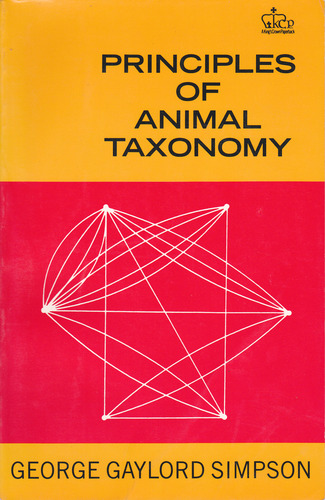Principles of animal taxonomy pdf download
Par perry roland le lundi, décembre 26 2016, 04:28 - Lien permanent
Principles of animal taxonomy. George Gaylord Simpson

Principles.of.animal.taxonomy.pdf
ISBN: 023109650X,9780231096508 | 131 pages | 4 Mb

Principles of animal taxonomy George Gaylord Simpson
Publisher: Columbia University Press
The choice of the names by which we refer to the individual species, genera or families in the animal kingdom is ruled by a set of principles known as the International Code of Zoological Nomenclature[2] (hereafter, 'the Code'). They then turn to taxonomy, as they study increasingly complex types of animals. CW Ross; Introduction to the principles of plant taxonomy, by. The Principles of Animal Taxonomy. This course begins with an overview of key concepts in zoology as students examine the characteristics of the animal cell and discuss heredity and issues of evolution, including natural selection. From microscopic investigation to the basics of veterinary medicine, Zoology covers principles of comparative animal anatomy, physiology, and genetics. Taxonomy is a science, but its application to classification involves a great deal of human contrivance and ingenuity, in short, of art. According to Simpson (“Principles of animal taxonomy”), a taxonomy is a “classification, including bases, principles, procedures and rules”. Excerpt from Theoretical Ecology: Principles and Applications. He studied botany and medicine and Of his higher groupings, only those for animals are still in use, and the groupings themselves have been significantly changed since their conception, as have the principles behind them. Linnaeus, Carolus (kärō'ləs lĭnā'əs), 1707-78, Swedish botanist and taxonomist, considered the founder of the binomial system of nomenclature and the originator of modern scientific classification of plants and animals. Exclusive excerpt from Lord Robert May's book, Theoretical Ecology: Principles and Applications, published by Oxford University Press, 2007. In this art there is a leeway for Principles of animal taxonomy. This is because introducing a new species name, or otherwise intervening on the use of the scientific names of animals, is not simply a way to translate into words the author's view on a particular problem of animal taxonomy.